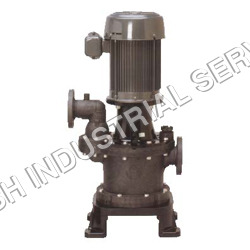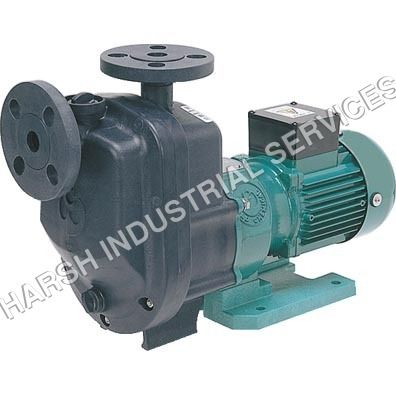NSF Self Priming Pump
Product Details:
- Color Dark Grey
- Usage For Industrial Use
- Product Type Pump
- Material Cast Iron & Stainless Steel
- Power Electric Watt (w)
- Click to View more
NSF Self Priming Pump Price And Quantity
- 1 Unit
- 50000 INR/Unit
NSF Self Priming Pump Product Specifications
- Electric Watt (w)
- Dark Grey
- Pump
- For Industrial Use
- Cast Iron & Stainless Steel
NSF Self Priming Pump Trade Information
- Cash in Advance (CID), Cash Advance (CA)
- 1 Unit Per Day
- 1-4 Week
- Western Europe, Australia, Eastern Europe, Middle East, Africa, South America, Asia, Central America, North America
- All India
Product Description
NSF Self Priming Pumps are widely used in water treatment plants, water supply and beverage industries for transferring of water. Our offered pumps are made using high-grade steel and components that we procure from certified vendors of the market. NSF Self Priming Pump is quality inspected before final delivery to ensure excellent performance and energy efficiency.
Striking characteristics: Less maintenance, Superior finish,Tough construction
Overview :
Material: CFR PP, High quality resin construction, All necessary measures taken for thermal expansion, Maintenance free, Valveless, Uniquely resistant to high temperatures, Resistance to wide range of chemicals
Features of NSF Self Priming Pump:
- High quality resin construction (CFR PP, CFR PVDF)
- All necessary measures taken for thermal expansion
- Maintenance free
- Valveless
- Uniquely resistant to high temperatures
- Resistant to wide range of chemicals
- Principle of Self-Priming
Parts Features :
A - Siphon Cut Hole : This siphone cut hole, connected to the self-priming chamber and the suction chamber, uses the outflow as a liquid seal, always preserving a state of vacuum in the suction chamber when self-priming. When stopping, the suction chamber makes use of the force of the backflow and the air traveled through this siphone cut hole to ensure that the primed liquid remain inside the suction chamber. If the siphon cut hole gets clogged through crystallization or with foreign particles, the amount of primed liquid will decrease. In such cases, a convenient cleaning plug should be used to unclog the debris.
B - Separating Board : This component, used to separate air and chemical mixtures through differences in specific gravity, is secured inside the self-priming chamber.
C - Balance Hole : Air sucked in through the shaft is guided by the protrusion ring, and is released through the balance hole into the self-priming chamber. This allows the impeller to remain in a state of vacuum during self-priming.
D - Seal Blade and Protrusion Ring : The seal blade (interior blade) has the function of sealing the liquid in the pump. The protrusion ring works to guide air sucked through the shaft during self-priming into the balance hole.
E - Self-Priming Hole : In a highly vacuumed state, the liquid that is already separated from air in the self-priming chamber goes through this self-priming hole, and is vacuumed by the impeller.
F - Suction Chamber : The suction chamber is composed of the main chamber and the residual chamber. When the pump is stopped, the liquid in the main chamber will suddenly backflow. However, air passed through the siphon cut hole will act as a shield and prevent the liquid in the residual chamber from escaping. This liquid will become the self-priming liquid for the next time the pump is turned on.
G - Suction Cut Hole : This hole allows backflow, which is necessary for the subsequent prime to enter the suction chamber when the pump is stopped. The suction cut hole is located on the wall of the main chamber.H - Shaft Sleeve and Impeller : With the impeller and the shaft sleeve constructed as one unit, the latter is completely walled off from the liquid. The open impeller is equipped with a back vane, which creates an opposing pressure to balance the pressure around the impeller.I - Self-Priming Chamber : Liquid exerted from the spinning chamber is separated into air and liquid by the differences in their gravities in this self-priming chamber. Air goes to the discharge outlet, and the liquid travels to the self-priming opening.

Price:
- 50
- 100
- 200
- 250
- 500
- 1000+






